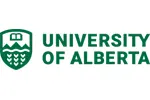

The Department of Chemistry offers thesis-based Master of Science and Doctor of Philosophy degrees, both requiring course work and thesis research. The Department provides an outstanding academic environment for those with an interest in analytical, inorganic, organic, physical chemistry, and chemical biology. Within each of these areas, Department members have vast expertise in: materials/polymer chemistry, environmental chemistry, chemical physics, nanoscience/nanotechnology, energy storage/conversion, computational/theoretical chemistry, glycomics, metabolomics, proteomics, catalysis, molecular electronics, natural product synthesis, and solid state chemistry.
The Department is composed of more than 220 graduate students, as well as postdoctoral fellows and research associates that support the Department's tradition of excellence in research. The Department's research infrastructure, staff support, and research funding is among the best in Canada . Faculty have been recognized for their award winning teaching and research excellence.
The active research interests of the staff include the following:
Analytical: Separation science, including gas chromatography, two-dimensional gas chromatography, liquid chromatography and capillary electrophoresis; chemometrics; scanning probe microscopies such as atomic force, chemical force, and tunneling methods for the characterization of surfaces, biocompatible materials, protein adsorption, nano-wires, nano-sensors, and nano-arrays; microfluidic systems for Lab on a chip applications; mass spectrometry for biochemical analysis, Proteomics and metabolomics, utilizing MALDI and electrospray methods; molecular biology applied to developing fluorescent protein-based biosensors for live cell microscopy of biochemical processes; optical and vibrational biomolecular spectroscopic methods and instrumentation development involving laser spectroscopy methods; electrochemical methods and surface modification techniques; surface plasmon resonance spectroscopy of confined materials; thin films and nanoparticles for for sensing and biosensing. Study of chemistry occurring in the environment, particularly in the atmosphere; environmental photochemistry; air pollution from combustion sources; cloudwater chemistry; chemistry and photochemistry of desert and urban dust; pollutants in the indoor environment; flow tube and smog chamber studies of atmospheric processes.
Chemical Biology: Glycobiology; bioorganic chemistry; bio-orthogonal chemistry; glycomics; synthesis of saccharides, glycolipids, peptides, and fluorophores to probe biological systems; glycoimmunology; biomedically significant protein-oligosaccharide interactions; biophysical analysis of model systems and live cells; mechanism and stereochemistry of enzymatic reactions; protein structure determination; library screening; cell-based screening; fluorescence microscopy; single molecule fluorescence analysis; biochemical analysis of glycoproteins and glycolipids; bioconjugate chemistry; fluorescent-based indicators; protein engineering; directed protein evolution; optogenetics; structure-activity correlations of antibiotics; peptide antibiotics; cell biology; genetically-encoded chemical libraries; in-vitro selection; phage display; biomaterials and synthetic cell microenvironments; self-replicating systems for DNA detection; artificial biopolymers; protein-ligand interactions; disease biomarker discovery; excited-state processes in biological systems; liposomal nanoparticles; non-ribosomal peptide synthesis; drug delivery.
Inorganic/Materials: asymmetric catalysis, block copolymer self-assembly, disordered materials, donor- acceptor stabilization of main-group species, electrical and magnetic materials, electrochemistry, fuel cells, functional materials, glasses, homogenous catalysis, hybrid materials, hydrogenation, inorganic polymers, intermetallics, ligand design, machine learning, main-group chemistry, materials for energy, nanomaterials synthesis and characterization, optical materials, organometallic chemistry, perovskites, pnictides, reaction mechanisms, silicon surface chemistry, solid state chemistry, solid state NMR spectroscopy of materials, Zintl phases.
Organic: Structural and synthetic studies on natural products; degradation of natural products; medicinal chemistry, heterocyclic chemistry; carbohydrate chemistry; organometallic chemistry; reactive intermediates (ylides, carbenes, nitrenes); organic photochemistry; acetylenes; allenes; free radicals; synthesis and conformational studies of glycoconjugates with an emphasis on the application of NMR spectroscopy and molecular modelling; genetically-encoded chemistry, peptide chemistry; development of new synthetic methodology and the synthesis of complex natural products with important biological properties; radical cyclization in synthesis; asymmetric catalysis; the invention of new reagents; conjugated molecules; organic, electronic and photonic materials; sensor arrays; combinatorial chemistry; solid-phase organic synthesis; organoboron chemistry.
Physical: Mass spectrometry; chemistry of biologically relevant molecules in the gas phase; NMR spectroscopy; application of advanced multinuclear NMR techniques to study molecular structure and dynamics in solids; dynamic nuclear polarization (DNP) NMR spectroscopy to study next-generation materials, biophysical chemistry involving NMR studies of peptide structure; DNA photo-damage; laser Raman spectroscopy, ultrafast molecular dynamics; nonlinear optical spectroscopy of the environmental, materials and biological interfaces; vibrational circular dichroism and Raman optical activity spectroscopy; chirality recognition/induction/amplification in the gas phase, in matrices, in solution, and at liquid-liquid interfaces; rotational and vibrational cluster spectroscopy; helium nanodroplet spectroscopy; hybrid laser-mass spectroscopy at ultracold temperatures; characterization of aerosol particle formation and ageing; environmental monitoring (high altitude balloon missions); computational and theoretical chemistry: study of the quantum dynamics; of systems of interest in physical chemistry; radiation-matter interactions; photodissociation dynamics; laser control; study of molecular structure and properties of molecules in excited states; mixed quantum-classical dynamics of condensed phase systems; theory and simulation of activated rate processes; vibrational energy relaxation; modeling of multidimensional spectra; development of basis sets; pseudopotential methods; electron correlation and relativistic effects; computational design and modeling of anti-cancer drugs.
Learn more about Chemistry, MSc, PhD - at University of Alberta
Visit course webpageFinancial assistance in the form of scholarships and graduate assistantships is normally available for all graduate students who maintain a satisfactory performance. For full details, see our website at www.chem.ualberta.ca (Graduate Program, Financial Support).
The Department's minimum admission requirements are an undergraduate degree with an admission GPA of at least 3.0 on the 4-point scale from the University of Alberta, or an equivalent qualification and standing from a recognized institution. The admission GPA will be calculated on the last *60 of graded coursework completed, or on the equivalent of the last two years of full-time graded coursework.
Candidates should normally be graduates in chemistry, however the Department will accept qualified applicants with degrees in related fields (cf., biochemistry or other bioscience programs from candidates who wish to pursue the chemical biology PhD program, and mathematics and/or physics background compensating for deficiencies in chemistry from those who wish to enter the chemical physics PhD program.)
Where applicable, applicants must meet the minimum English Language Requirement.
Students are also required to submit the following:
The University of Alberta offers a wide ranges of scholarships to international students. You will be evaluated for these scholarships when you apply for admission. Your eligibility will be based on your high school admission average at the time of your admission offer. We'll assess you for a match to the following three scholarships. If you are eligible for an admission-based scholarship we will contact you directly!
You can also apply for scholarships based on your application, including the President’s International Distinction Scholarship, awarded annually to 25 international students, worth up to CAN $120,000.
To find out more about scholarships click here.
There are 370 other courses listed from University of Alberta. A selection of these are displayed below:
University of Alberta main campus location is shown on the map below:
Find out more about studying in Canada